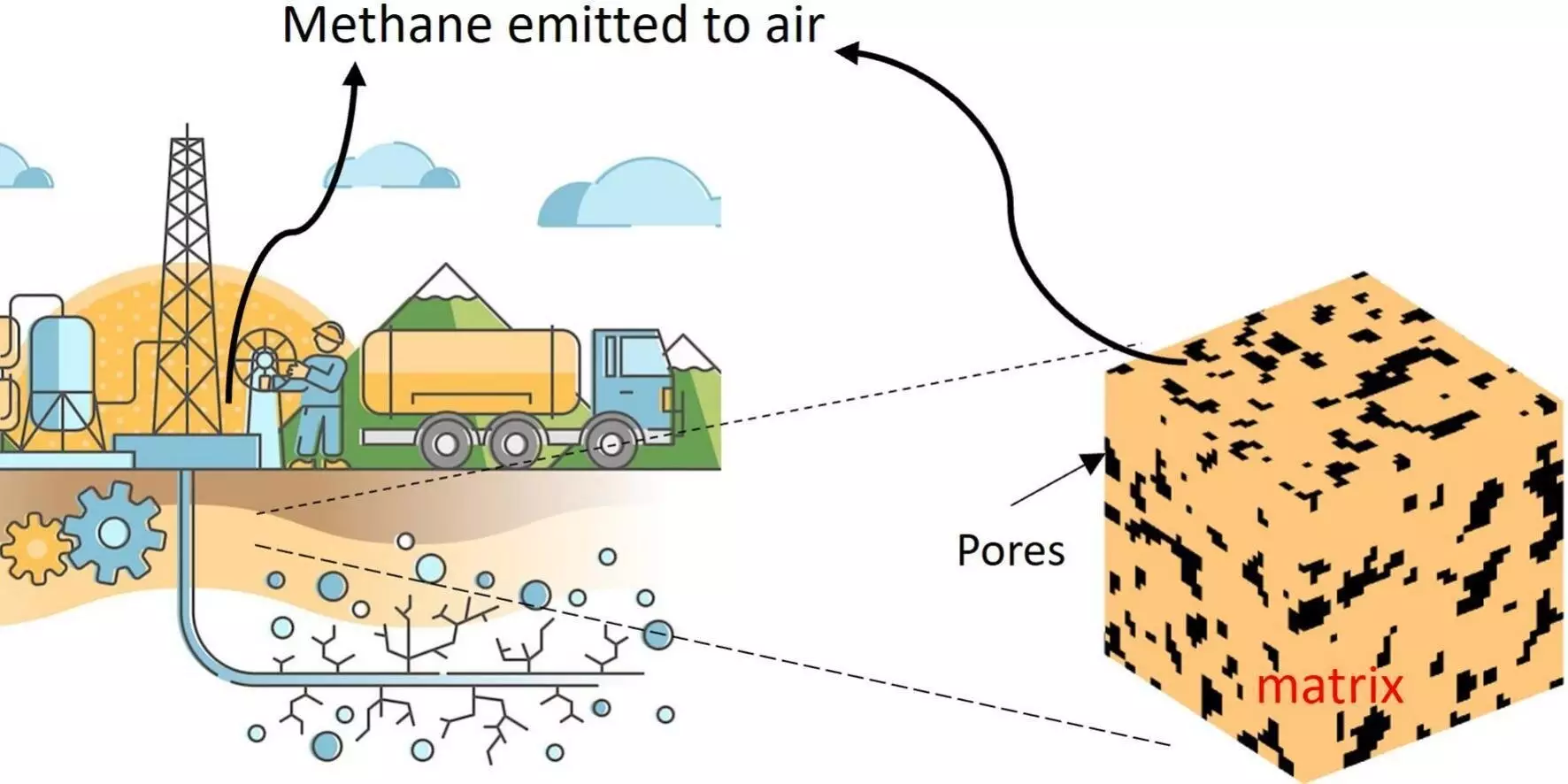Extracting natural gas from shale formations can provide an abundant, lower-carbon footprint fossil fuel, but also creates concerns over increased methane emissions. A team led by Penn State researchers has developed a new tool that can estimate the emission potential of shale wells after they are no longer active. The findings, published in the journal Science of the Total Environment, revealed that methane begins diffusing from the shale formation after a well is decommissioned and that this represents a notable source of methane emissions comparable to the most significant emissions during drilling and operation of the well.
Shale formations have low permeability, meaning gas does not move through the rock easily. Operators drill down thousands of feet, more than a mile, to reach shale and then drill thousands of feet more horizontally through the formation. They pump a mixture of liquid and sand at high pressure into the shale to open tiny fractures and allow gas to escape from the rock. By analyzing shale samples, the scientists were able to create a mathematical model to predict the movement of methane that remains in the formation based on the pore structure.
Called a unified gas transport model, the tool integrates how all the gases in the shale move and the structure of the shale to predict methane’s flux behavior. The team validated their model against experiments with Marcellus shale conducted on specialized equipment in Liu’s laboratory at Penn State. This model provides a proactive way to understand the behavior of methane in the subsurface and can be a useful tool for the industry to estimate methane emissions flux based on sample information.
Methane emissions have a stronger global warming potential than carbon dioxide, making it crucial to mitigate these emissions. The United States and its international partners have committed to reducing global methane emissions by about 30% by 2030. Implementing regulatory requirements for long-term monitoring of methane emissions from abandoned shale gas wells is essential to curb the potential impact of these emissions on the environment.
One major problem is that methane leakage has a higher global warming potential compared to carbon dioxide, highlighting the urgency of mitigation efforts. With more than 20,000 shale gas wells drilled in areas like Pennsylvania since the start of the Marcellus shale gas boom in 2005, understanding and controlling methane emissions from these wells is crucial to meeting emission reduction goals.
Maintaining reservoir pressure even after a well stops producing could be an effective strategy to reduce methane emission potential from abandoned shale gas wells. Diffusion, which increases as reservoir pressure decreases, contributes to a long-lasting flow of methane from the formation towards the abandoned wellbore. Proper plugging techniques and long-term monitoring of methane emissions are necessary to prevent methane accumulation and potential leakage over time.
The potential of methane emissions from abandoned shale gas wells poses significant challenges that must be addressed through proactive measures, regulatory oversight, and effective mitigation strategies. By understanding the behavior of methane in shale formations and implementing long-term monitoring and control measures, the industry can work towards reducing the environmental impact of methane emissions and meeting emission reduction targets.



Leave a Reply